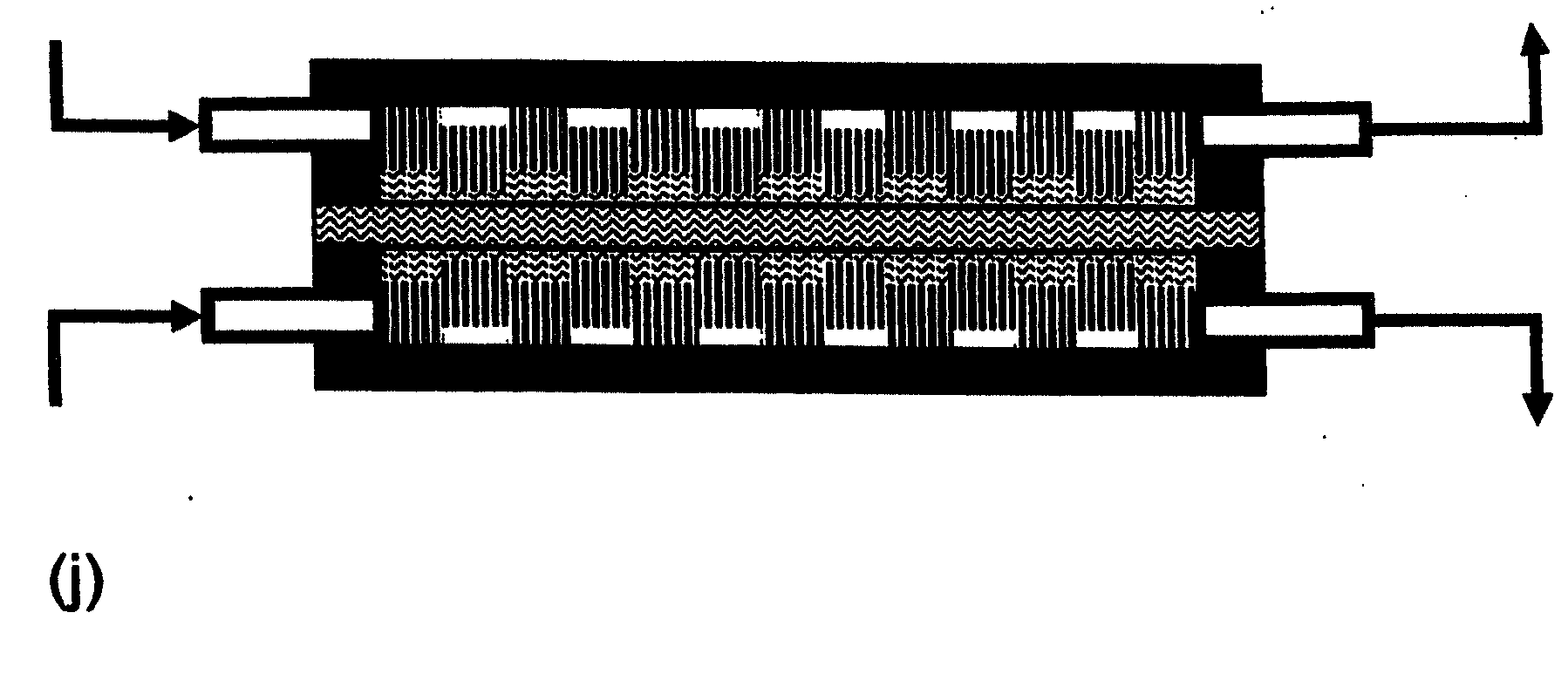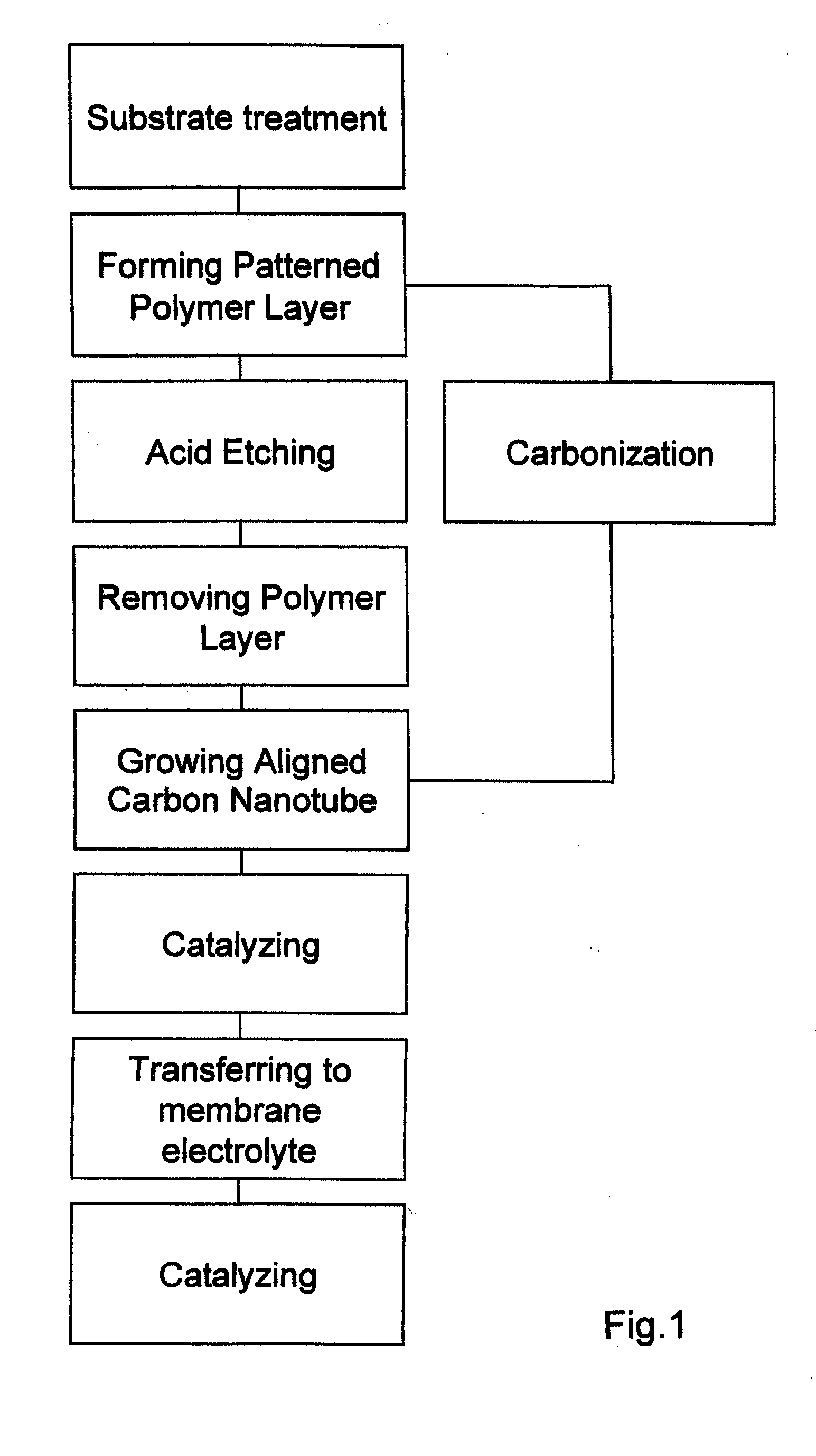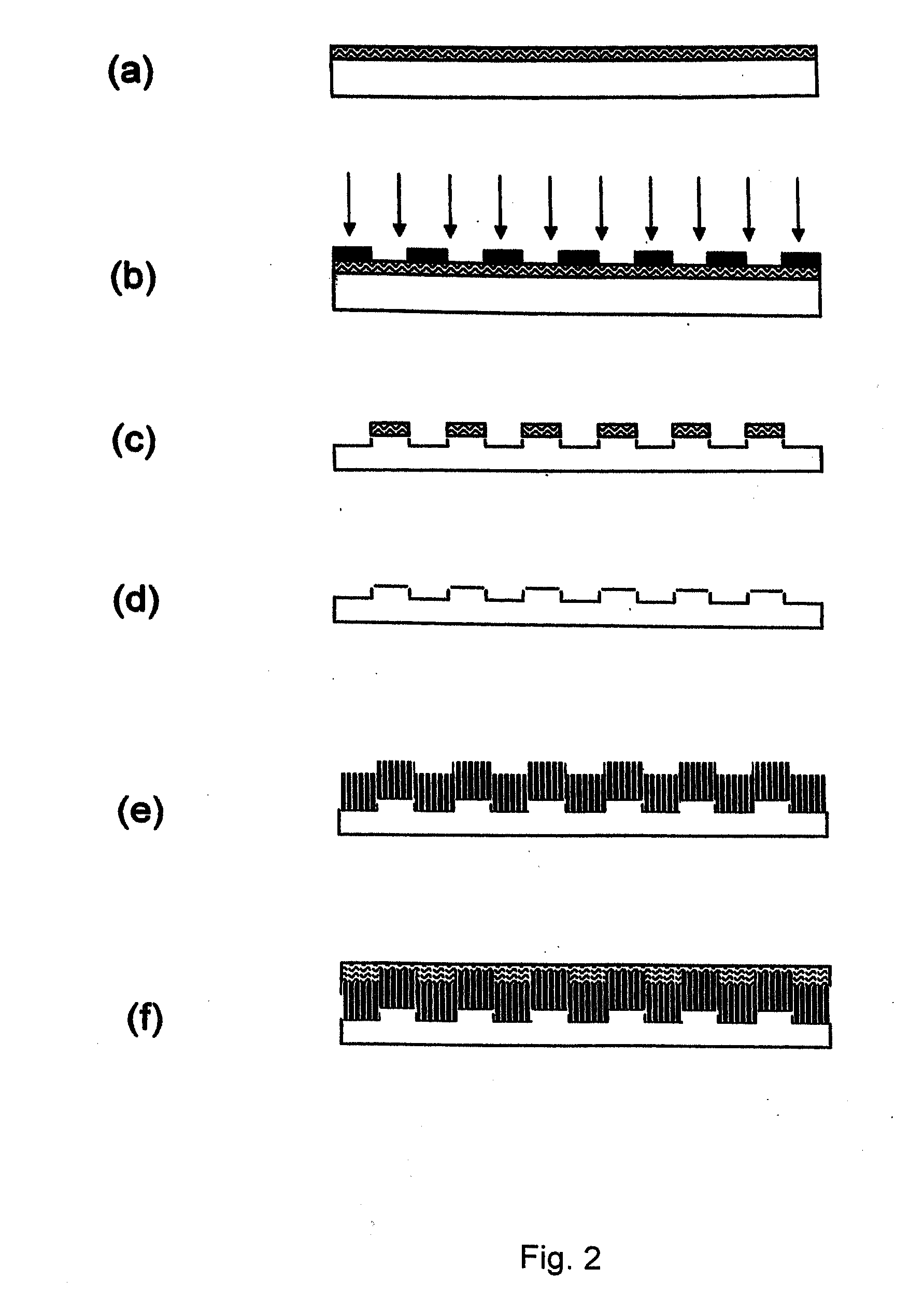Method of fabricating electrode catalyst layers with directionally oriented carbon support for proton exchange membrane fuel cell
a proton exchange membrane fuel cell and electrode catalyst technology, applied in the manufacture of final products, cell components, electrochemical generators, etc., can solve the problems of high precious metal usage, inaccessible gas flow, inefficient utilization, etc., and achieve the effect of simplifying the design and fabrication of bipolar plates and reducing precious metal usag
- Summary
- Abstract
- Description
- Claims
- Application Information
AI Technical Summary
Benefits of technology
Problems solved by technology
Method used
Image
Examples
example 1
[0041]A thin quartz plate with dimension of ⅝ inch×1.5 inch×0.1 inch was cleaned in a solution containing 70 vol. % concentrated H2SO4 and 30 vol. % H2O2. The solution temperature was maintained between 70° C. to 100° C. After cleaning and rising with deionized water, it was ultrasonically cleaned in acetone for 30 min. The dried quartz plate was ready for the use as the substrate.
example 2
[0042]A negative photo-resist solution was prepared by mixing the solution A and B where A is made by dissolving 184 mg of triphenylsulfonium triflate in 12 ml water / acetonitrile solution followed by mixing with 725 mg of N-(hydroxymethyl)acrylamide solution, and B was made by dissolving 2.029 g PVA in 20 ml water. The photo-resist solution was subsequently filtered through a 0.1 μm filtration paper and used for spin-coating on the treated quartz substrate according to Example 1 with a high speed spin-coater (Model 1-EC101DT-R485, Headway Research, Inc.). A pipette was filled with the photo-resist solution. The solution was dispensed over the quartz substrate in a droplet fashion while the coater spun at 2500 rpm for 30 seconds. The coating was baked at 90° C. for 30 minutes inside of a vacuum oven. A photo-mask with linear strip pattern was placed over the top of the coated quartz plate. An ultraviolet radiation with wavelength of 254 nm generated from an UV lamp (Mineralight, UVG-...
example 3
[0043]A positive photo-resist solution was obtained under the brand name Shipley S1818, that contains diazonapthoquinone and Novalac resin dissolved in propylene glycol methyl ether acetate. The substrate prepared according to the Example 1 was first coated by a thin layer of hexamethyldisilazane (HMDS) via a spin coater before being coated with the photo-resist solution with the dry thickness about 2 microns. After baking in vacuum oven at 90° C. for 30 minutes, a photo-mask with linear strip pattern was placed over the top of coated substrate plate. An ultraviolet radiation with wavelength of 365 nm generated from an UV lamp (Ultra Violet Products, Model UVL-23RW) was applied to the coated plate through the photo-mask for 15 seconds. The exposed substrate was subsequently developed in an aqueous solution containing 5% tetramethylammonium hydroxide for 1 minute followed by rinsing in deionized water to wash away the exposed portion of the coating. After baking at 130° C. for 30 min...
PUM
| Property | Measurement | Unit |
|---|---|---|
| temperature | aaaaa | aaaaa |
| room temperature | aaaaa | aaaaa |
| temperatures | aaaaa | aaaaa |
Abstract
Description
Claims
Application Information
 Login to View More
Login to View More - R&D
- Intellectual Property
- Life Sciences
- Materials
- Tech Scout
- Unparalleled Data Quality
- Higher Quality Content
- 60% Fewer Hallucinations
Browse by: Latest US Patents, China's latest patents, Technical Efficacy Thesaurus, Application Domain, Technology Topic, Popular Technical Reports.
© 2025 PatSnap. All rights reserved.Legal|Privacy policy|Modern Slavery Act Transparency Statement|Sitemap|About US| Contact US: help@patsnap.com



